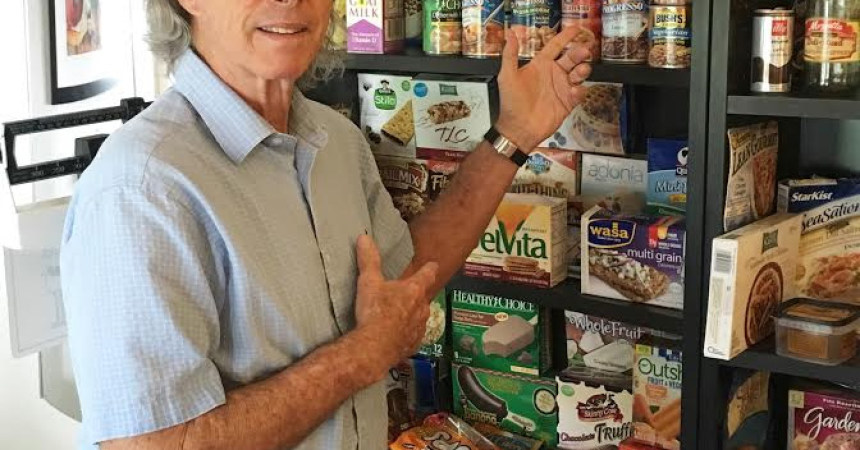
Switching diets require some effort and planning

Standing in front of his shelf of healthy food alternatives, Dr. Freddy Kaye showcases the beans that can substitute for meat. / Photo by Haylee Bell
By Haylee Bell
Outlook writer
It seems like every day there is a new health trend that people follow for instant gratification. The recent trend is the urge to switch to diets such as vegan and vegetarian.
But making the switch does take some effort, said Freddy Kaye, a medical clinical nutritionist for more than three decades in Tallahassee. The transition requires balance — mainly replacing the protein in meats with foods such as beans, Kaye said.
And, there is proof that more Americans are making the switch.
The Journal of the American Medical Association reports that the number of Americans that have a healthy diet has increased by 50 percent between 1999 and 2012. While this trend is rising across the nation, there are some things that need to be considered before reaping the benefits.
“Normally you need eight amino acids which are proteins for rebuilding tissue and cells,” said Kaye. “So you need to make sure you get those eight amino acids”.
In order to replace the eight amino acids that are lost through meats and dairy products, Kaye suggests combining legumes, beans, brown rice, or grains to add those proteins to the diet.
“I meet people in here who were vegan at some point of time and they failed because they started getting weak because they didn’t know about combining the legumes and grains together.”
Maya Souverin, who has been a vegan for a year, said that the change in her lifestyle showed through her body.
“I felt much lighter on my feet,” she said. “I don’t really get gas, indigestion, or heartburn and I lost some weight.”
But the switch wasn’t easy for Souverin at first because of the challenge she found in planning and preparation.
“Once you become a vegan your food choices become really limited,” she said.
Contrary to popular belief that making the switch could be costly, Kaye said changing to a plant-based diet like vegan or vegetarian could save a lot of money to some degree.
“Protein is the most expensive nutrient there is,” he said. “So in the interest of cost; a pound of chicken is $2. A pound of red meat is probably $2. A pound of good fish like salmon is probably $9 to $10 a pound. so in reality if you want organic greens and you go with legumes and beans, you’re really saving money.”
Even though prices at supermarkets that only feature organic groceries tend to be higher and could cause some second-guessing about a veggie diet, Souverin said that she turns to farmer’s markets for better prices.
“It’s actually kind of cheaper for me, I usually don’t shop at Whole Foods (store),” she said. “I usually find like farmers markets where they have organic fruits and organic vegetables and they sell a whole bucket for like $2.”
Kaye suggests that before people switch diets that they get a lab test from their doctor to check for any amenities such as low iron, low folic acid and B12. He also suggests repeatedly checking blood glucose levels during a three-month period.







